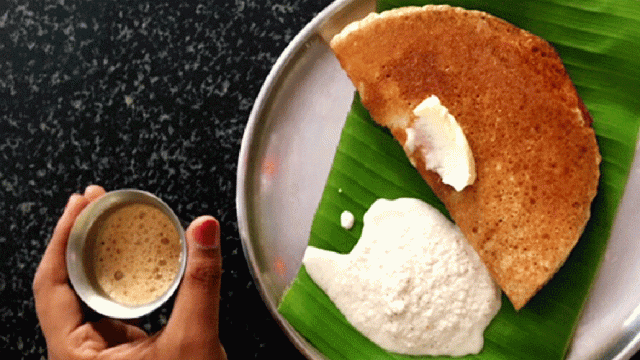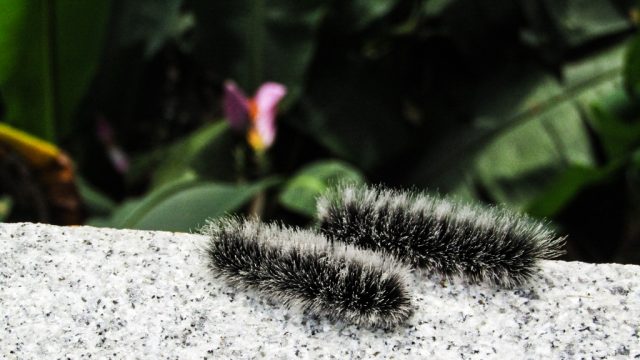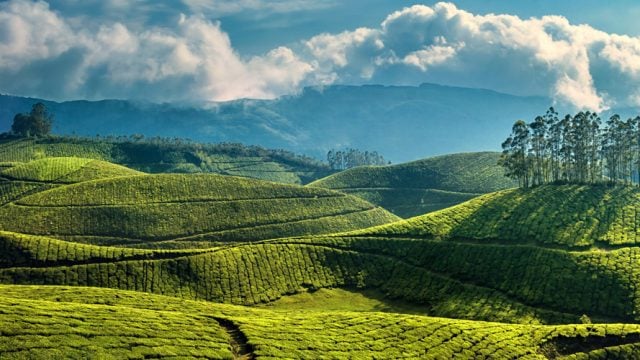Gangamma Kashiappa Benagi, an octogenarian vegetable vendor from Dharwad, had more creases on her face than the

We were a couple of writers accompanied by two chefs and a video crew driving through Karnataka, cooking and sampling local delicacies as part of a food research project for a restaurant. While we stuffed our faces all day, Gangamma vended vegetables, tilled her field, and changed two buses to meet us and rustle up a great vegetarian spread. She even slapped out 18-inch jolada ( jowar or sorghum) rotis by hand. This was Shravana-month cuisine, she explained, using native vegetables available in the monsoon.
On offer were jowari doddmensinkayi palya (stuffed country capsicum curry), so pungent it had to be tempered down with curd, gulagayi yenagai (country cucumber fry), jowari mensinkayi (pan-fried country chilli), majjige saaru (buttermilk curry) and karchikai palya (Momordica cymbalaria), a little pod that must be consumed right after harvest, before it bursts open.
In north Karnataka’s jowar belt, sorghum/millet is used to make jolada roti, served at Lingayat eateries like Basaveshwara Khanavali in Hubli (now Hubballi). In the 12th century, the philosopher saint Basavanna started the Veerashaiva Lingayat faith, marked by the worship of Shiva and vegetarianism. In Dharwad, Hotel Nataraj displays the saint’s sayings on a board outside every morning.
Lunchtime business is brisk at Basappa Khanavali, a legendary Lingayat eatery started by Basappa Malgond in 1930, with set meals comprising jolada roti, yenne badnekayi (brinjal curry), hesarukaal palya (green gram curry) and jhunka (steamed gram flour cubes dusted with sesame and coriander leaves). The region is known for its pudis (powders) that supplement the diet as sources of protein—agasi (flax seed), yellu (sesame), shenga (groundnut), puttani (chana dal) and gural or ucchelu (Niger seed), commonly sprinkled on salads and curries or stuffed into brinjal or okra.

In an Amingad home, we discovered unusual delicacies like tingal avrekayi palya, a dish made from a local bean available only for a month (tingalu in Kannada). Soute bija huggi (broken wheat kheer), so called because it resembles tiny soute bija (cucumber seeds), features in all Lingayat functions. Rolling out the little pellets of broken wheat dough is tedious. Ashok, who runs Amingad Cold Drink House with his father, joked, “In north Karnataka, we also have traditional momos and pasta.”

The ladies rolled out kuchida kadabu (wheat dumplings), kudisida kadabu (stuffed dumplings) and uggi chapattis, steamed on green corn husk and served with spicy kempu (red) chilli chutney and ghee. Little dough beads were pressed on a comb for stripes and shaped into miniature shells. “Bro, it’s like orecchiette [ear-shaped pasta],” exclaimed Chef Manjit. Epiphanies lurked around every corner.
At the LEA (Lingayat Educational Association) Canteen, we tried thuppa avalakki (beaten rice with ghee) and their signature masala toast with chatnipudi, benne (white butter) and sauce, a veritable desi peanut butter sandwich. Sweet stall owner ‘Hotte’ (pot-bellied) Nanjappa was literally a heavyweight in the local food scene. He distributed free treats to children and the poor before selling mandakki (puffed rice) and sweets to customers. Meghdarshini offered outsized pooris, unlimited sabzi and chutney for those with smaller pockets. Philanthropy ran deep in Dharwad.

The Dharwad peda story began 175 years ago, when Ram Ratan Singh Thakur migrated from Unnao due to the plague and started making them for a living. His grandson Babu Singh Thakur popularised it and people formed such long queues at the shop that the area was named Line Bazaar. In 1933, a penniless Avadh Bihari Mishra settled in Line Bazaar and got into the business. Today, Mishra peda, with its industrial production and multiple outlets across cities, has made the Dharwad peda a household name.
Dharwad’s twin-city Hubballi is dotted with Lingayat khanavalis like Basaveshwara, and Savaji eateries like Nakoda and Devika standing cheek-by-jowl with brass bands and ammunition shops. Durgada Bail, the city’s legendary Khau Galli (Eat Street) fires up the evening with snack stalls serving masala dosa and tomato omelette.
The bold flavour of Sauji or Savaji cuisine is a beacon for lovers of meat and spice. Savajis or Somavamsha Sahasrarjun Kshatriyas (SSKs), who claim descent from the mythic thousand-armed warrior Kartiveerya Arjun, migrated to Karnataka, Maharashtra and Andhra’s borders from central India. Meat, blood and chilli dominate their cuisine. During Dussehra, they offer edimi (wheat gram flour dumplings), arithi (wheat flour diyas) and lalpani (liquor) to the goddess Bhavani. We cooked classics like keema ball and khara boti at Hotel Milan Savaji with the Kabadis, and traditional delicacies with Vidya and Vishwanath Kathare, including rakti (blood curry), tale mamsa (brain curry) and karadu (spicy) mutton. If Savaji cuisine uses blood, its spiciness extracts an equal measure of sweat and tears.

Northwest Karnataka shares a border with Maharashtra, and the Maratha love for spice is evident in Belgaum (now Belagavi). Be it rassa (fiery curries) or sukka (spicy dry fry), red chilli is essential. Manjula’s chicken sukka and mutton rassa at Pai Resorts left us teary-eyed in more ways than one. An erstwhile British cantonment, Belagavi is also famous for its kunda, a sweet made of milk and khova, best at Camp Purohit. Anyone naïve enough to advertise their travel plans to these parts is bound to be saddled with requests for boxes of sweets.

The city’s other sweet, mande or mandige, is a crêpe with a thin filling of sugar, ghee and khova. It is whirled like a roomali, baked on an upturned skillet and folded like a rectangular dosa. At Krishnamurthi Saralaya’s Mandige on Konwal Gali, Vijaykumar shared a fascinating legend. A devout Brahmin was in deep penance when the Lord appeared before him. Since he had nothing to offer, he rolled some dough, sugar and ghee, and baked it on his back with the heat of his tapas (penance). Thus, the mandaka or mandige was born. It is a must in Brahmin weddings, often displayed unfolded in large baskets. Many a marriage has been called off because no mandige was served.
North Karnataka does love its sweets. Kardant was invented in Amingad, though popularised in Gokak. In 1907, Savaligappa Aiholi of Amingad mixed dry fruits like pistachio, almonds, cashew, dates, figs, copra, jaggery and antu (edible gum), and fried them together, creating the karadi-antu (fried gum). Like a nutty granola snack, it became popular among those frequenting garadimanes (wrestling akhadas). Gulbarga (now Kalaburagi) is famous for its paan mithai and malpuri, created by Khasim Ali but immortalised by Mamu Jaan, while Bellary (Ballari) is known for its ‘cycle’ khova sold on bicycles.

From sheep farms in Haveri and the ‘chilli town’ of Byadgi, to the erstwhile Muslim principality of Savanur known for Shivalal’s legendary khara (mixture) since 1931, we went into virtually uncharted terrain on our food trail. Just past Almatti Dam, Korti-Kolhaar on the Hubballi–Vijayapura highway attracts travellers with fresh fish from the Krishna river. The matka curd, served with puttani avalakki (beaten rice) for ₹25 lasts for days without going sour.
Menthya (fenugreek) is another staple, and sprigs of the smaller-leaved country variety are served at every meal, made into a pachadi (salad) or steamed into kadabu (dumplings). With our Bijapur oota (meal), we got crunchy country cucumbers as well. Here, people love their jolada rotis crisp and their mensinkayi bajjis fiery. “But why such spicy food in a hot climate?” we asked. Thippanna looked at us incredulously. “People eat spicier food so it makes them sweat and keeps the body cool.” Baffling but believable.
At Kalaburagi, the Maratha-run Chaddi Hotel got its name from the owner who wore shorts. Gajanan of Chetak Sauji Hotel recounted how on a busy night, he ran out of food and had to cook a fresh batch in a pressure cooker, which patrons tagged ‘seeti [whistle] rice’. The small-grained rice goes perfectly with kavala (tender) mutton, keema balls and anda curry. The Hyderabad–Karnataka region, bordering Andhra Pradesh and Telangana, has culinary influences like gongura (sorrel leaves), made into chutney or cooked with lentils or mutton. Hyderabadi dishes like biryani, dalcha (meat with lentils) and bread ka meetha are popular in these parts.

In 1512, Guru Nanak came to the Deccan during his second udasi (spiritual journey). Legend has it that when people lamented about the brackish water in Bidar, he tapped a stone with his foot to create a freshwater spring (jhira) that flows to this day. The langar (free kitchen) at Gurudwara Nanak Jhira feeds thousands daily, while Rohit Restaurant nearby serves excellent Punjabi food.

We stopped for Iduga cuisine at Dandina Hirehalu, the historic camping ground for soldiers marching from Bellary Fort to Chitradurga Fort. The Idugas migrated from Andhra to Karnataka centuries ago, and are known for meaty cuisine and a fondness for chilli. At HRG Farmhouse, Mahadevi explained, “Mutton kebab is best marinated with papaya flowers. Every part of the goat is utilised—trotters for kaal [leg] soup, blood added to boti [intestines] becomes nalla vanta, and spleen and liver mixed with hand-pounded chilli makes batti chutney.” The round appetisers tasted like paté.

Beyond Hampi’s Hebrew signboards advertising shakshuka, babaganoush and Israeli fare, there’s local food aplenty. At Uramma Heritage Home in Anegundi, we cooked with Sharda and Hemlatha of the Bhuvneshwari self-help group, who specialise in traditional cuisine. They whipped up unusual bhendekayi (okra) chutney, alasande gugri palya of cowpeas or lobia, country brinjals roasted on an open fire and mashed into badnekayi chutney, hesaru bele (green gram), payasa (kheer) and kosambri (salad).
Davanagere is synonymous with the benne dosa, made with white butter, and served with alu palya (potato mash) and coconut chutney, best savoured hot at Kottureshwara Benne Dosa Hotel. Ganesh K Davanagere, a professor of electronics and communication who loves chronicling the local food scene, took us on a street food tour with a cooking session at his sister Vinutha Ravi’s home. Davanagere has hundreds of bhattis (mills) that produce mandakki (puffed rice), served with mensinkayi bajji (chilli fritters) at street stalls. At TS Manjunath Swamy Masala Mandakki Angadi, puffed rice was furiously stirred into masala, kharaor nargis mandakki. An entire street was dedicated to shavige (vermicelli), drying like screens of silken yarn on terraces. The tantalising aroma of oggarne (seasoning) hung in the air as someone busily tapped a ladle against a vessel.
The Information
Getting There
There is a daily flight from Bengaluru to Hubballi, from where Belagavi is 101km, Davangere 151km, Hampi 164km, Ballari 214km and Vijayapura 193km. From Vijayapura, Kalaburagi is 151km and Bidar 112km further northeast.
Where to Stay
Davanagere, Vijayapura, Kalaburagi and Bidar all have regular city hotels. Try Royal Fort Hotel (royalforthotel.com) in Ballari; Pai Resorts (pairesorts.in) in Belagavi; Uramma Heritage Home (urammaheritagehomes.com) at Anegundi and Orange County’s Evolve Back (evolveback.com/hampi) at Kamalapura near Hampi.
Where to Eat
Davanagere: Sri Guru Kottureshwara Benne Dosa Hotel (Medical College Road, Kuvempu Nagar; ph.9449135100), TS Manjunath Swamy Masala (Mandakki Angadi Lawyer Road, Jaydev Circle; ph. 9902200924), Hamsini Hotel (Shamanur Road; ph. 9886792331)
Hubballi: Basaveshwar Khanavali (opp. Old Bus Stand, Kamaripeth; ph.0836-2357745)
Dharwad: Basappa Khanavali (opp.Civil Court, PB Road; ph.9902729973), Hotel Milan Savaji (Jubilee Circle, PB Road; ph.0836-2435450, 9341998875), Kathare’s Savaji Hotel (Line Bazaar, opp. Sangam Theatre; ph. 0836-2441956, 2435450), Hotel Nataraj (Sangam Circle; ph.0836-2442855, 9964607800), LEA Canteen (Belgaum Road; ph.9448147157), Megh Darshini Restaurant (Subhash Road; ph.0836-2435147), Amingad Cold Drink House (Subhash Road; ph.0836-2442437, 9740013177), Babusingh’s Thakur Pedha (Near Sri Ram Temple, Line Bazaar; thakurpedha.com), Mishra Peda (Court Circle, SH-1; ph. 0836-2213217; mishrapedha.com)
Belagavi: Krishnamurti Saralaya’s Mandige (Konwal Gali), Camp Purohit (opp. Shringar Cinema, High Street, Camp; ph.0831-2422715), Hotel Niyaaz (PB Road, opp. Market Police Station; ph. 0831-2400133)
Hampi: Uramma Heritage Homes (Anegundi; ph. 9448284658; urammaheritagehomes.com)
Amingad: Vijaya Kardant (SH-20, Raichur Highway; ph. 8123115005)
Vijayapura: Shri Sai Prasad Khanawali (Sainik School Road, opp. KSRTC Workshop; ph. 9902153239)
Kalaburagi: Hotel Chetak (Humnabad Base; ph.9901003399), Mamu Jaan ki Malpuri (Chappal Bazaar)
Bidar: Rohit Restaurant (Inside Kamaan, Guru Nanak Colony; ph. 9241374425)
North Karnataka
Anurag Mallick
Priya Ganapathy





